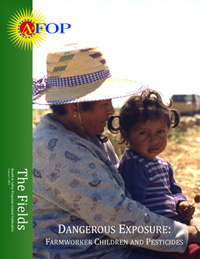20
May
National Organic Standards Board Strengthens Organic Integrity at Spring Meeting
(Beyond Pesticides, May 20, 2011) At its April 26-29, 2011 Spring meeting in Seattle, Washington, the National Organic Standards Board (NOSB) strengthened standards affecting the integrity of organic food and farming and rejected proposals that would have weakened the standards. The board voted on recommendations proposed by each of the various issue committees including Crops; Livestock; Handling; Materials; Certification, Accreditation, and Compliance; and Policy Development. Decisions were made regarding a wide range of materials and practices, from pesticides and fertilizers to mulches and processing aids. 
There were several highly controversial issues discussed, including the use of antibiotics to control fruit tree diseases, living conditions for livestock, and the process for how the board determines whether a material is natural or synthetic. You can find details for the meeting on Beyond Pesticides’ organic action page.
Prior to the meeting, the committee proposals were posted on the internet and opened for public comment. Following the democratic spirit inherent in the organic law, the board is required to take the voiced concerns of the public into consideration in making its decisions. There were over three thousand comments submitted to the board for this meeting — more than any other previous NOSB meeting. Many of the comments received concerned one of two issues: nutrient supplementation in processed organic foods, and requirements regarding the living conditions for livestock. Decisions on both of these issues ultimately ended up being postponed, due in part to the numerous comments received from the public. This serves as a testament to the power the public has in being able to shape the future of organic food and farming.
In taking its final votes and issuing its decisions, the board decided to eliminate some previously allowed substances, such as sodium nitrate fertilizer, while adding only one new substance to the National List of Allowed and Prohibited Substances — attapulgite clay for clarifying natural oils. Some of the more controversial and significant decisions are discussed below. To see the full results of each proposal and vote, go to Beyond Pesticides’ Spring 2011 meeting page.
Antibiotics have long been a contentious issue in organic, and in conventional, agriculture. They have been banned in organic livestock production since the adoption of the Organic Foods Production Act in 1990. However, limited uses have been allowed in crop production for the purposes of fighting fireblight disease in apple and pear trees. The two antibiotics currently allowed are tetracycline and streptomycin. Past boards have been uncomfortable with this use, due to concerns that the prophylactic application of antibiotics is inconsistent with organic production principles. In 2008, the board voted to put an expiration date on the allowed use of tetracycline, making it a prohibited substance beginning October 21, 2012. A petition was submitted for the spring 2011 meeting asking the board to remove this expiration date and allow use to continue. Although the committee recommended against adopting this petition, there was a great deal of push back from organic fruit growers, who believe the material is vital for combating disease. A compromise was reached whereby the expiration date would be pushed back two years, to October 21, 2014 and the Crops Committee is expecting that growers will develop a transition plan that will address the transition to fire blight resistant varieties and rootstocks, preventive cultural practices, and an increased push for research on alternative control products.
Streptomycin, an antibiotic used for the same purposes as tetracycline, was given an October 21, 2014 expiration date by the board under its sunset review process. This cuts three years off a typical
five year sunset renewal. Here again the board is seeking to expedite a phase-out of antibiotic use in organic apple and pear production.
Corn steep liquor (CSL) is a byproduct of the corn wet-milling process which produces materials such as corn starch and corn syrup. It is used agriculturally to fertilize fields because it contains high amounts of nitrogen. At issue was whether CSL should be classified as a natural or synthetic substance. This is important because inherent in organic principles is a preference for natural inputs over synthetic whenever and wherever possible. A majority of the Crops Committee recommended finding that CSL is nonsynthetic, and thus, automatically allowed for use in organic production. A significant minority of the committee, however, strongly criticized this recommendation and advocated for finding CSL synthetic, due to scientific analysis they had received categorizing the CSL production process as constituting chemical change to a form other than its natural form. In the end, there were not enough votes for the board to classify CSL as nonsynthetic. However, according to staff at the USDA National Organic Program, this does not constitute a finding by the board that CSL is synthetic. Such a finding would require a separate vote. Though seemingly esoteric on the surface, the CSL issue became highly controversial because of its implications for classification of future materials as synthetic or natural. The debate revolves around the board’s definition of “synthetic” and how to determine whether a material is synthetic, which is an issue at the very heart of organic principles that seek to minimize synthetic inputs.
The Handling Committee had proposed a recommendation which would have expanded approved nutrient additives in organic food, either natural or synthetic, to include any that have been deemed nutritionally essential by bodies such as the FDA or the Institute of Medicine of the National Academies. Due to thousands of public comments in opposition to this recommendation as well as input from the National Organic Program regarding potential problems with the proposed recommendation, the committee withdrew the matter and will rework the recommendation for the next NOSB meeting in the fall. The board voted to reapprove nutrients as they currently appear on the National List until a new recommendation can be developed.
Animal Welfare Recommendations
The Livestock Committee had proposed significant changes to the regulations concerning organic livestock production in order to better account for concerns about animal health and welfare. However, numerous public comments deemed that the recommendations do not go far enough to ensure proper animal health. Still more comments from farmers showed concern about the feasibility of the recommendations from a production standpoint. The committee decided to withdraw their recommendations from consideration at this meeting and rework them in light of the input they received.
Sometimes called Chilean nitrate because it is mined and imported from Chile, sodium nitrate serves as a natural source of nitrogen fertilizer for farmers. Unlike other organic fertilizers, such as compost, sodium nitrate provides plants with an immediately available soluble source of nitrogen. Since this runs contrary to the organic principle of “feed the soil, not the plant,” and also presents the potential for leaching and nitrate pollution due to its high solubility, the substance was placed on the NOSB’s short list of prohibited natural substances. Additionally, there was concern about the adverse environmental effects of mining for the material. The board vote removed an annotation that had allowed farmers to use sodium nitrate as long as they did not use it for more than 20% of their crops’ total nitrogen. At the Spring 2011 meeting, the board decided to remove the annotation allowing this narrow use and completely prohibit the substance from being used in organic production.
USDA’s Agricultural Marketing Service oversees the National Organic Program (NOP) and the NOSB. The NOSB includes four producers, two handlers, one retailer, three environmentalists, three consumers, one scientist and one certifying agent. The board is authorized by the Organic Foods Production Act and makes recommendations to the Secretary of Agriculture regarding the National List of Allowed and Prohibited Substances for organic operations. The NOSB also may provide advice on other aspects of the organic program. For more information on the history of organic agriculture and why it is the best choice for your health and the environment, please see Beyond Pesticides’ Organic Food Program Page.
The next NOSB meeting will be November 29 — December 2, 2011 in Savannah, Georgia. The committees will work throughout the summer to develop their proposals to bring to the Fall meeting.














